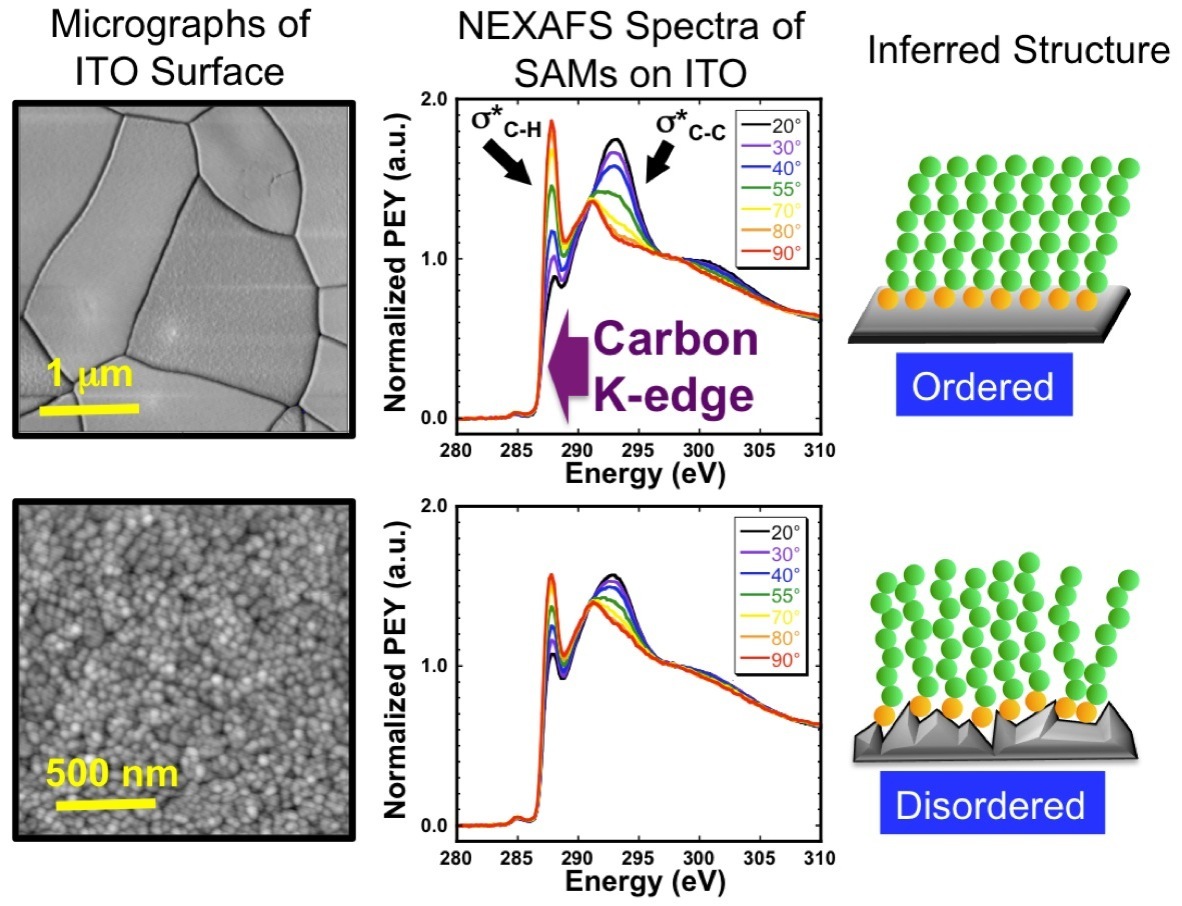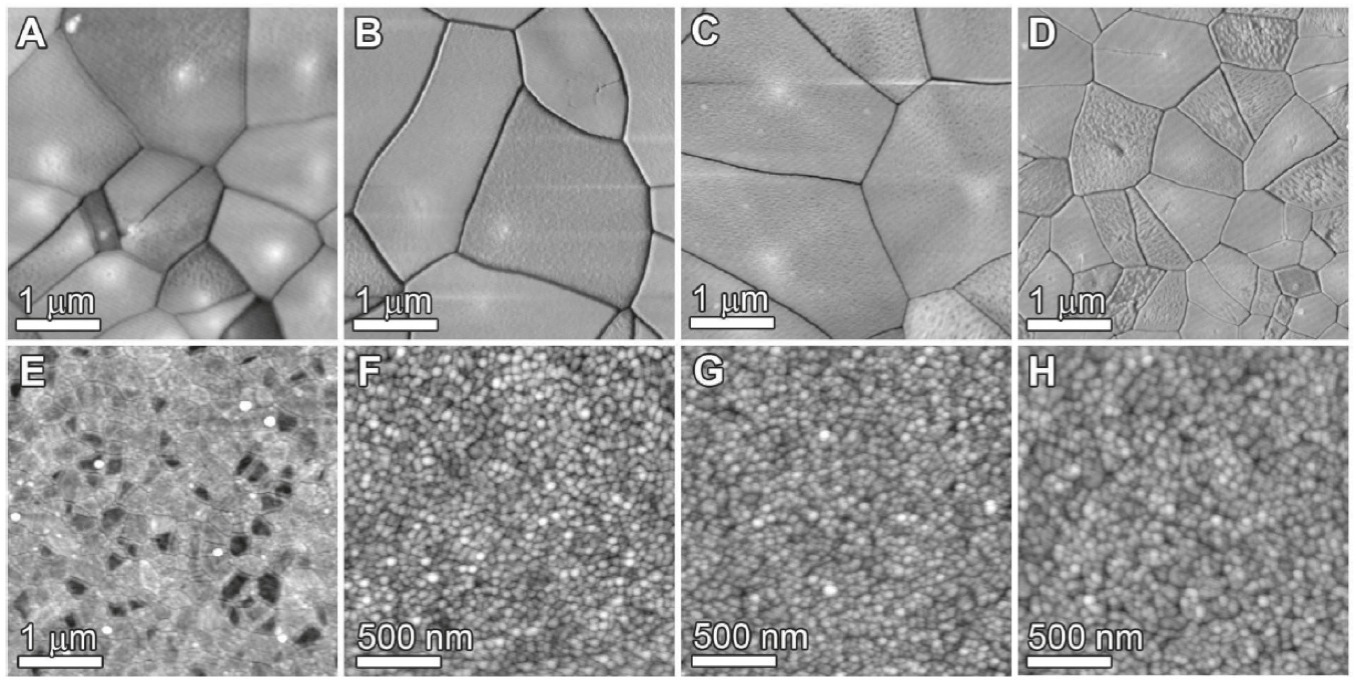

Interfacing materials. Interfacing disciplines.
Home | PI Info | Research | Publications | Mentoring/Outreach | Links


I have been interested in understanding the structure of SAMs on conductive oxide surfaces including indium tin oxide (ITO) and aluminum doped zinc oxide (AZO). While these interfaces are relevant to my work in plasmonic sensors, SAM/ITO interfaces are also critical to band engineering in hybrid electronics including transparent field effect transistors and hybrid solar cells. Thus, fundamentally understanding ITO/SAM interfaces is crucial to a number of contemporary technologies. Commercially available ITO thin films are highly variable in composition and microstructure (see Ref. 2) so a critical examination of ITO deposition parameters was undertaken. Through an extensive evaluation of sputtering deposition conditions, ITO morphology and surface composition were found to be unusually sensitive to sputter pressure and deposition temperature, likely due to the volatility of the In and Sn components. (Fig. 1 demonstrates the large variations in surface morphology that results simply by adjusting the sputter pressure.) Fine control of the deposition parameters provided an opportunity to study surface morphology and composition effects on SAM ordering using Near Edge X-ray Absorption Fine Structure (NEXAFS) spectroscopy (Fig. 2) which was conducted at Brookhaven National Lab’s National Synchrotron Light Source (NSLS).

Fig. 1: AFM images of ITO films deposited at (A) 4 mTorr, (B) 6 mTorr, (C) 8 mTorr, (D) 9 mTorr, (E) 10 mTorr, (F) 12 mTorr, (G) 15 mTorr, (H) 20 mTorr
NEXAFS Investigations of SAM Ordering on ITO Surfaces
Related Publications
1. M. D. Losego, J. Guske, A. Efremenko, J-P Maria, and S. Franzen, “Characterizing the molecular order of phosphonic acid self-assembled monolayers on indium tin oxide surfaces.” Langmuir 27 11883 (2011). DOI
2. M. Cerruti, C. Rhodes, M. Losego, A. Efremenko, J-P. Maria, D. Fischer, S. Franzen, J. Genzer, “Influence of indium-tin oxide surface structure on the ordering and coverage of carboxylic acid and thiol monolayers.” J. Phys. D 40 4212 (2007). DOI
Fig. 2: NEXAFS Analysis of SAM Ordering. AFM images of two different ITO surfaces. NEXAFS spectra collected at different angles of incidence for octadecyl phosphonic acid monolayers deposited on these ITO surfaces. Because the cross-section for electron excitation into anti-bonding orbitals depends on the relative alignment of the photon’s polarization vector with the orbital, variations in excitation intensity with incident angle indicate an ordered structure. Thus, we infer that phosphonic acid SAMs order well on surface’s with RMS roughnesses less than the SAM’s molecular length. (See Ref. 1 for more details)
